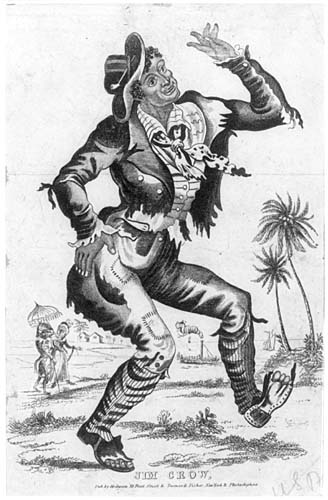Venue Type & Location
Theatre
Overview
Beth Marquis
Troupes at Princess's Theatre, Leeds
| Film | Affiliated people | Film Type | # of event(s) |
|---|---|---|---|
| Aldridge, Ira | Aldridge, Ira | Dramatic | Definite Aldridge, Ira |
| Green Bushes Troupe (Leeds, 49) | Dramatic | Definite Green Bushes Troupe (Leeds, 49) |
Events at Princess's Theatre, Leeds
| Event | Date | Venue Location | Film |
|---|---|---|---|
| Dramatic | - | Leeds, Yorkshire: West Riding | Aldridge, Ira |
| Dramatic | - | Leeds, Yorkshire: West Riding | Aldridge, Ira |
| Dramatic | - | Leeds, Yorkshire: West Riding | Aldridge, Ira |
| Dramatic | - | Leeds, Yorkshire: West Riding | Aldridge, Ira |
| Dramatic | - | Leeds, Yorkshire: West Riding | Aldridge, Ira |
| Dramatic | - | Leeds, Yorkshire: West Riding | Aldridge, Ira |
| Dramatic | - | Leeds, Yorkshire: West Riding | Aldridge, Ira |
| Dramatic | - | Leeds, Yorkshire: West Riding | Aldridge, Ira |
| Dramatic | - | Leeds, Yorkshire: West Riding | Aldridge, Ira |
| Dramatic | - | Leeds, Yorkshire: West Riding | Green Bushes Troupe (Leeds, 49) |
| Dramatic | - | Leeds, Yorkshire: West Riding | Aldridge, Ira |
| Dramatic | - | Leeds, Yorkshire: West Riding | Aldridge, Ira |
Bibliographic Sources
New Theatre / Princess' Concert Hall / Princess' Theatre / Princess' Palace / Tivoli / Hippodrome
The Princess' Theatre was originally built for William Schuking Thorne as the New Theatre in 1848 but was later rebuilt and renamed, under new ownership in 1874, as the Princess' Concert Hall, later the Princess' Palace. The Theatre was renamed the Tivoli in 1898 and later still, in 1924 after major improvements, The Hippodrome. The Theatre was closed in 1933 and demolished over 30 years later in October 1967 after being used as a garment workshop and warehouse. […]”“In 1848 apart from the Music Hall in Albion Street, the only theatre in Leeds was the Theatre, south of the river in Hunslet Lane. In the Leeds Intelligencer of 16th December 1848 a notice appeared saying that 'Mr Thorne respectfully invites the Patrons of the Drama in Leeds to view the interior of his new theatre, (now erecting in King Charles Croft)'.
On the 26th December 1848 the strength and safety of the building was certified by the borough engineer, and Thorne was granted a licence to perform stage plays. The theatre opened in January 1849, and by March the theatre was being advertised as the Princess's theatre; the proprietor was William Schuking Thorne.
The theatre staged a mixture of straight drama and variety acts. In 1850 the programme had a distinctly local flavour when a drama called 'Warnock Kennilson or the Witch of Woodhouse Moor' was put on. Madame Labariere with her troupe of lions tigers and bears was another attraction, and in 1857, the clown W F Wallet was on stage. On one occasion part of the performance took place outside the theatre itself as in the benefit for the clowns John Garrett and Harry Thatcher, when Mr Garrett travelled from Victoria Bridge to Leeds Bridge in a washing tub pulled by four geese! On the playbill for February 17th 1852 the chief attraction was the play 'Rookwood', or 'Turpin's Ride to York'.
The history of the Princess' theatre is closely linked to that of the Amphitheatre next door. Joseph Hobson rented the plot of land next to the Princess' theatre from Thorne, and built the Leeds Casino and Concert Hall, which was extended in 1856 and re-named The Royal Alhambra. In 1864 Hobson obtained a dramatic licence which enabled him to put on plays rather than music hall entertainment, and he changed the name of his theatre to the Royal Amphitheatre. Thorne's Princess' theatre could not compete successfully with the Amphitheatre, and Thorne went out of business, selling his theatre to Hobson, who rebuilt the Princess's theatre and opened it as the Princess's Concert Hall on Christmas Eve 1874. In 1880 there was a benefit performance for Hobson's general manager James Ellis. Ellis had started his career as a gymnast and had performed at Hobson's Casino in 1849.
The name was changed to the Tivoli in 1898, but the theatre could not compete with the new Empire Palace on Briggate and the Coliseum on Cookridge Street which both opened that year, and the company was forced into liquidation in March 1899. The lease of the Tivoli was taken over by Thomas Barrasford, a Jarrow businessman. He spent over £5000 improving the theatre, and installing new tip-up seats.
The theatre opened under a new name, the Hippodrome. In 1924 the Hippodrome put on the revue 'Wonder', with Jos. Alexandre and Ida May Chadwick. But the theatre could not afford to put on really first class productions, with the top stars, and by the 1930s theatre audiences were declining; the cinema and radio were becoming increasingly popular. The Hippodrome closed in 1933; the last performance at the Hippodrome was on 10th June 1933, with Count Berni Vici and his Royal Embassy Band. The building was used by Schofields as garment workshop and warehouse until it was demolished in October 1967.”- Hamden, Connecticut: Archon Books, 1981possibly the venue referred to at p117.

